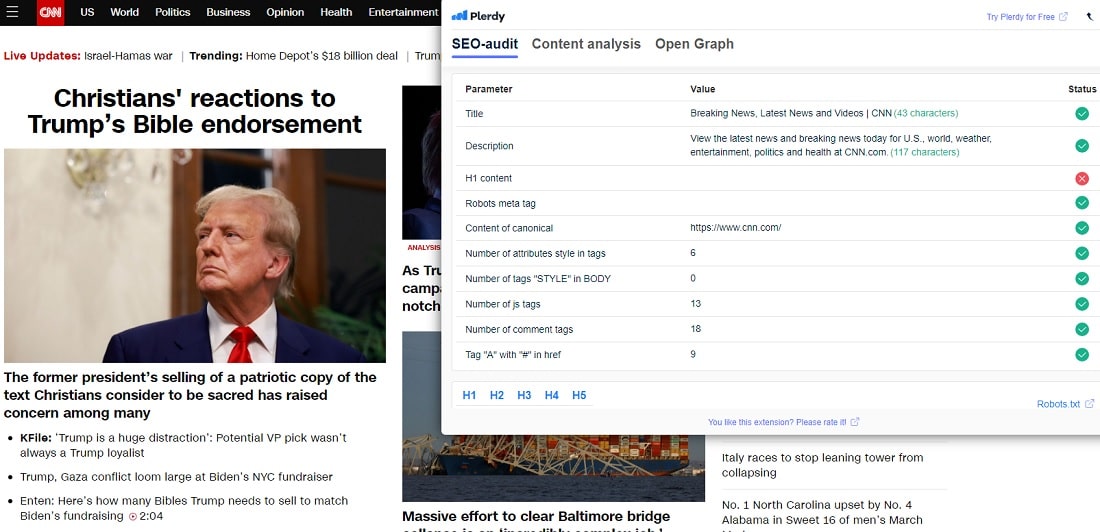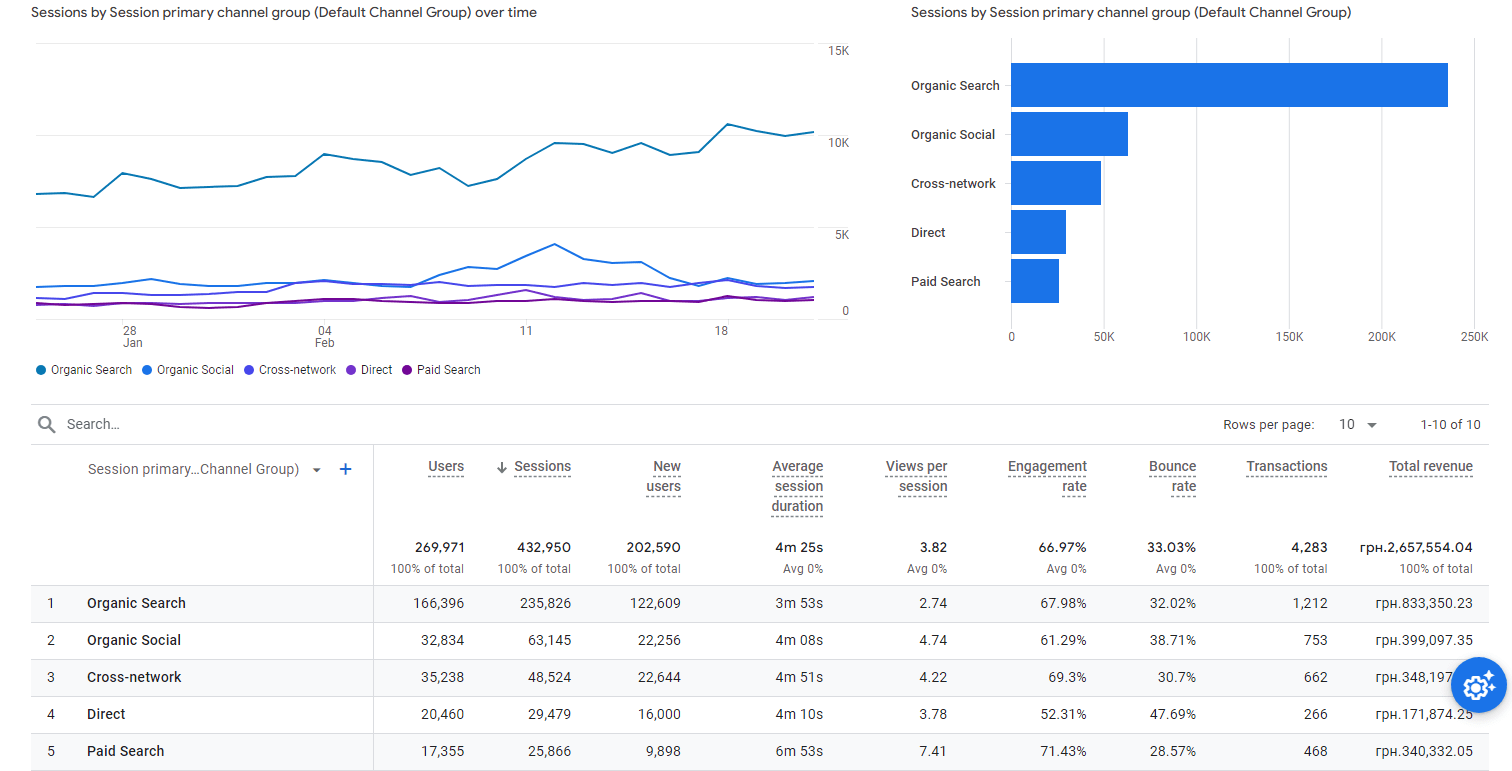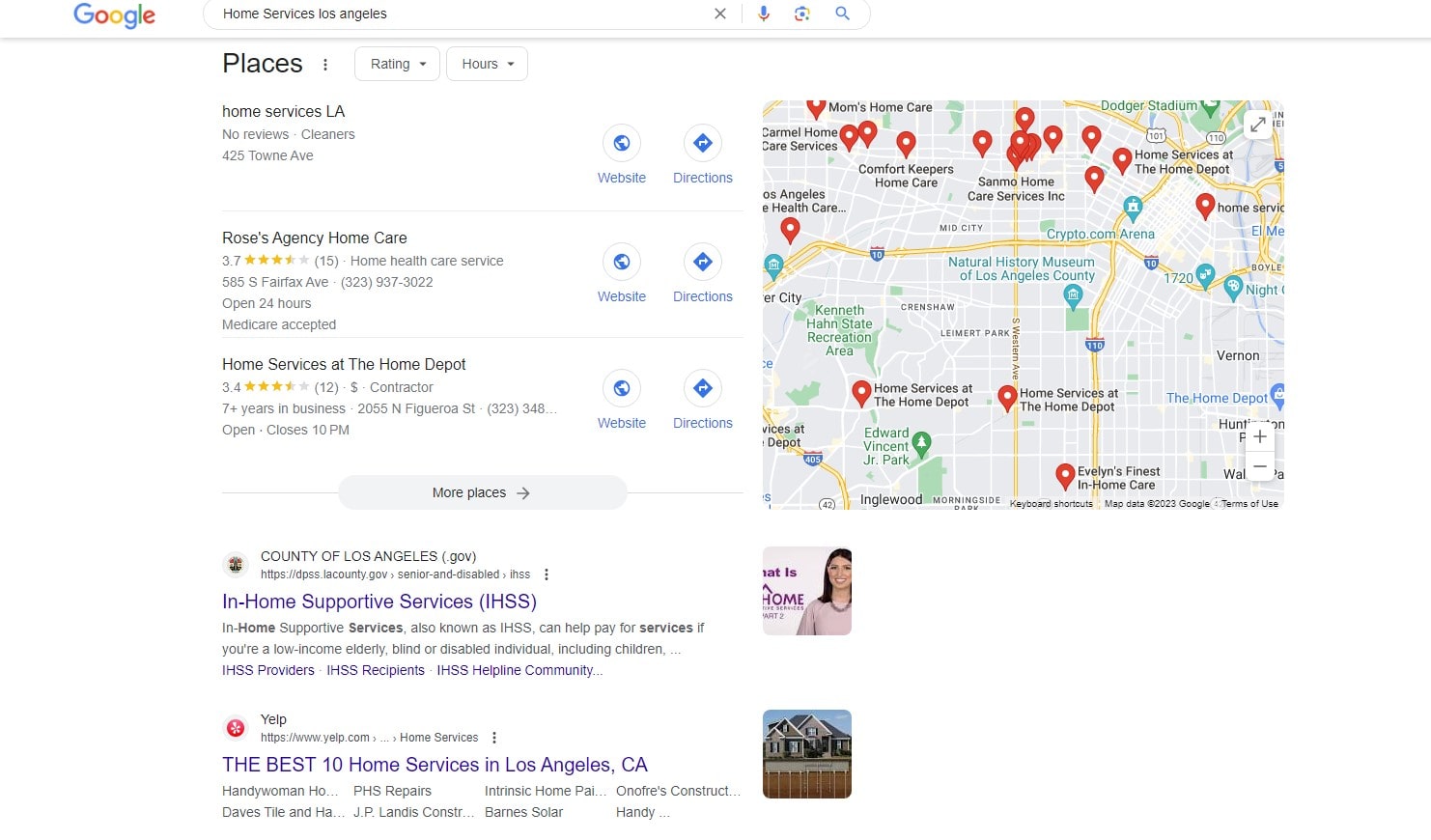Imagine SEO as a game of hide and seek, where Google is ‘it’ and your website is trying not to be the last one found. In this fast-paced world of algorithm changes and updates, understanding SEO basics is like having a map in this hide-and-seek game. This article will explore how proven SEO strategies and skills can help your website climb to the top in Google’s search results. Plerdy is here to assist you on this journey, providing tools and analytics to enhance your website’s effectiveness.
Understanding SEO Fundamentals for a New Website

SEO is like learning a search engine-specific language. It’s the art of tailoring your website so that search engines find it and appreciate its value, leading to higher rankings. Let’s dive into SEO essentials, stripping away complexities to reveal what matters.
At its core, SEO revolves around keywords. These are the terms and phrases that people type into search engines. You aim to naturally identify and incorporate these keywords into your website’s content. Google’s Keyword Planner can help identify popular search terms.
Content is king in the realm of SEO. Your content’s quality, relevance, and regular updating determine your website’s appeal to users and search engines. Engaging, original content that answers users’ questions and provides value will always stand out. Content that meets user purpose ranks higher in search engines.
Another cornerstone of SEO is on-page optimization. This ensures that elements like title tags, meta descriptions, and header tags (H1, H2, H3, etc.) effectively highlight key topics and keywords. Websites like Moz provide comprehensive guides on best practices for on-page SEO.
Off-page SEO, primarily focusing on backlinks, is equally important. Backlinks are external links to your site. They act as endorsements, signaling to search engines that your site is a credible source. Only some links from reputable websites are worth more than many from lesser-known sources. Technical SEO, though often overlooked, plays a crucial role. This includes website speed, mobile-friendliness, and structured data. Google’s PageSpeed Insights tool can offer a wealth of information on optimizing your site’s technical aspects.
Understanding SEO fundamentals involves blending keyword strategy, quality content, on-page optimization, off-page tactics, and technical know-how. By mastering these elements, you’ll make your site visible to search engines and enhance the user experience, which is the ultimate goal. SEO is a marathon, not a sprint, needing constant effort and a changing digital environment.
Building a Structured for a New Website

Building a structured website is akin to constructing a house. A website needs a sturdy foundation and sensible room layout for easy navigation and SEO, just like a house. Firstly, a clear hierarchy is essential. This means having a well-defined homepage that branches out to main categories and further into subcategories or individual pages. Think of it as a tree: the homepage is the trunk, categories are the main branches, and subcategories and pages are the smaller branches and leaves. This structure helps users navigate your website and allows search engines to crawl it more efficiently.
Next, consider your URL structure. URLs should be simple, readable, and reflective of the content on the page. Avoid lengthy and complicated URLs; use short and descriptive ones with relevant keywords. This improves user experience and helps search engines interpret page content. Navigation is another key element. Your website should have a menu that’s easy to find and use, with clear labels indicating what users will find on each page. Include a search bar for larger websites, allowing users to find what they want quickly.
Internal linking is also crucial. You can direct users to more relevant material by linking related pages on your website. Spreading link equity across your site helps user experience and SEO.
Another effective technique is using breadcrumbs. These navigational aids show users their current location on the site and how to return to previous pages. Breadcrumbs improve user experience and assist search engines in grasping your site framework.
Consider mobile responsiveness. Your website must work properly on all screen sizes as mobile use rises. Mobile-friendly websites rank better in search engine results and provide a better user experience.
Finally, regularly audit your site structure. As your website grows, keep an eye on its structure to ensure it remains logical and user-friendly. Google’s Search Console can reveal site performance and structural concerns. A well-structured website is vital for both user experience and SEO success. It involves clear navigation, logical hierarchy, effective internal linking, and mobile responsiveness. Regular audits and updates will keep your website in top shape, ensuring it meets both user needs and search engine requirements. A well-structured website is not just about looking good; it’s about being functional and effective in the digital world.
Mobile Optimization and Site Speed for New Website

In today’s digital landscape, mobile optimization and site speed aren’t just features; they’re necessities. Imagine this: a potential customer tries to visit your site on their smartphone, but it loads so slowly that they lose interest and leave. That’s a lost opportunity that happens more often than you might think.
Mobile optimization means ensuring your website is as efficient and user-friendly on a mobile device as on a desktop. This responsive design is where your site adapts to device screen size and orientation. Google ranks mobile-friendly websites higher, making mobile optimization crucial to SEO. Site speed is equally crucial. Slow-loading websites leads to higher bounce rates and lower user satisfaction. Studies demonstrate that a one-second page load delay can drastically reduce conversions. To improve site speed, focus on optimizing images, minimizing code, leveraging browser caching, and using a content delivery network (CDN).
Be mindful of testing. Use tools like Google’s PageSpeed Insights or GTmetrix to assess and improve your site’s performance. These tools provide valuable insights into what’s slowing down your site and offer actionable recommendations for improvement.
A mobile-optimized website with fast loading times is essential in today’s online environment. It enhances user experience, improves search engine rankings, and ultimately contributes to the success of your online presence. If you monitor and optimize these characteristics, your website will stand out in the competitive digital market. In the fast-paced world of the internet, every second counts.
Creating Compelling Content for a New Website

Creating compelling content is akin to crafting a masterpiece in a world cluttered with doodles. It’s not just about filling your website with words; it’s about making those words resonate with your audience. Search engine optimization and digital marketing depend on content. The cornerstone of compelling content is relevance and value. Your content should be pertinent to your audience’s interests and needs and provide them with actionable insights or solutions. Do not only speak what you want—say what your audience wants. To achieve this, understanding your audience is paramount. Conducting audience research and utilizing tools like Google Analytics can provide insights into what topics your audience is interested in and how they consume content.
Quality trumps quantity. Your content must stand out in a world where information overload is a common challenge. This requires well-researched, well-written, and thoroughly edited material. Good content is more than just grammatically correct; it’s engaging, informative, and sometimes entertaining. Tell stories to make your content memorable.
SEO optimization is essential for content delivery. Use relevant keywords naturally within your content. Tools like Google’s Keyword Planner can help identify keywords that are relevant to your content and have a high search volume. Avoid keyword stuffing, which hurts SEO. Visuals make content more appealing. Use photos, infographics, and videos to break up text and make your material more engaging. Visual content should complement and reinforce the message of your written content.
Finally, content should be updated regularly. Outdated content loses relevance and can negatively impact your SEO performance. Regular updates keep the material fresh and the audience engaged.
Creating compelling content is a blend of art and science. Understand your audience, commit to quality, optimize SEO, and use images to engage. Following these guidelines ensures your content captivates your audience and drives your SEO success. Content reigns online and is your marketing ace.
On-Page and Off-Page SEO Techniques for a New Website

Navigating the world of SEO is like solving a complex puzzle, where each piece plays a critical role. Two significant pieces in this vast realm are on-page and off-page SEO techniques. Mastering both can significantly enhance your website’s visibility and ranking.
On-Page SEO
This is all about making your website’s pages loveable to search engines and users. It starts with keyword optimization. Find appropriate keywords using Google’s Keyword Planner and naturally include them in your content, titles, and meta descriptions. Keyword stuffing is a no-go; it’s about strategic placement. Your website’s structure also matters. Ensure it’s logically organized with a clear hierarchy. User-friendly URLs, which are descriptive and concise, contribute to better crawling by search engines.
Content is king in SEO. Your website should offer valuable, high-quality content that satisfies the searcher’s intent. This includes using appropriate headings (H1, H2, etc.) and ensuring your content is fresh and updated regularly. Technical aspects like site speed, mobile responsiveness, and user experience are paramount. Tools like Google PageSpeed Insights can provide insights into your site’s performance and offer suggestions for improvement.
Off-Page SEO
While on-page SEO focuses on what’s on your website, off-page SEO is about increasing your domain’s authority through external means. The cornerstone here is building backlinks – links from other websites to yours. These are like votes of confidence in the eyes of search engines. Focus on getting high-quality backlinks from reputable sites. Techniques include guest blogging, creating shareable content, and engaging in relevant online communities.
Social media also plays a role in off-page SEO. Regularly engaging on platforms like Facebook, Twitter, and LinkedIn can drive traffic to your site and increase your brand’s visibility. Social signals can indirectly impact your SEO performance.
Combining on-page and off-page SEO strategies creates a robust approach to optimizing your website. While on-page SEO ensures your site is search-engine friendly, off-page SEO builds its reputation and authority. Implementing both in harmony can significantly improve your site’s ranking and visibility. It’s a continuous effort of fine-tuning and adapting to the evolving SEO landscape, but the rewards for web traffic and visibility are well worth it. In the world of SEO, every little effort counts towards a bigger goal.
Tracking and Analyzing SEO Performance for a New Website

SEO is like navigating through a dense forest; you need the right tools to track your path and ensure you’re heading in the right direction. Tracking and evaluating SEO results helps you evaluate your methods and make modifications. Start by utilizing Google Analytics, a powerful tool that provides insights into your website’s traffic, audience behavior, and engagement levels. Monitor page views, bounce rate, and average session duration to gauge user engagement. Pay attention to the acquisition reports to understand how visitors find your site. Are they coming from organic search, social media, or referrals? This data helps fine-tune your SEO strategies.
Another critical tool is Google Search Console. It offers valuable information about your site’s visibility on Google. Check your site’s performance in terms of impressions, clicks, and average position for various search queries. It’s also essential to identify crawl errors, understand your site’s mobile usability, and view which external sites link to your content.
Pay attention to the importance of keyword tracking. Tools like SEMrush or Ahrefs can track your website’s keyword ranking. This helps in understanding which keywords drive traffic and which need more focus.
It’s not just about the numbers; qualitative analysis is equally important. Regularly check and update your content to meet user intent. Also, keep an eye on your competitors’ performance. Analyzing their strategies can provide insights and opportunities for improvement.
Tracking and analyzing your SEO performance is not a one-time task but an ongoing process. It involves using the right tools, understanding the data, and being willing to adapt your strategies as needed. By staying informed and responsive, you can navigate the complexities of SEO and steer your website toward continuous improvement and success. In the ever-evolving world of SEO, the only constant is change. Stay vigilant, stay informed, and keep adapting.
Utilizing Local SEO for Enhanced Visibility New Website

Local SEO is like being the go-to person in a small town: everyone knows where to find you when needed. For businesses, mastering local SEO means ensuring your potential customers find you easily online, especially when they’re in your vicinity.
Start with Google My Business (GMB) – your digital storefront. Complete your business name, address, phone number (NAP), operation hours, and classifications accurately. Keep everything consistent across all online platforms. Why? Because Google loves accuracy. Regularly update your GMB with fresh posts and photos, and respond to positive and negative reviews. This engagement shows Google (and your customers) that you’re active and attentive.
Next, leverage local keywords. If you’re a bakery in Austin, instead of just targeting “best bakery,” aim for “best bakery in Austin” or “Austin birthday cakes.” Use these local-specific terms in meta titles, descriptions, and content across your website. This strategy helps Google understand your local relevance.
Remember to underestimate the power of local backlinks. Get involved in your community to be featured in local news, participate in local events, or collaborate with other local businesses. These backlinks improve your local search engine authority.
Social proof matters. Promote client reviews on GMB and other directories. Positive reviews boost your visibility and credibility. Respond to these reviews to show engagement.
Local SEO is about making your business easily discoverable in your community. An effective local SEO plan includes maintaining your GMB profile, leveraging local keywords, obtaining local backlinks, and accumulating favorable reviews. As you focus on these elements, you tell Google, “Hey, we’re here, we’re relevant, and we’re exactly what people in our area are looking for.” The goal is to make it effortless for locals to find you, just like they would find a landmark in their neighborhood.
Conclusion
In wrapping up, we’ve journeyed through the dynamic world of SEO, exploring its core components and strategies. SEO isn’t a one-time setup; it’s an ongoing process of improvement and adaptation. As search engines evolve, so should your SEO tactics. Keep learning, testing, and optimizing. Hungry for more insights? Read Plerdy’s blog posts to learn about digital marketing trends. And remember, Plerdy provides SEO tools and statistics. Elevate your SEO game with Plerdy and unlock the full potential of your online presence. Stay ahead in the digital race!
